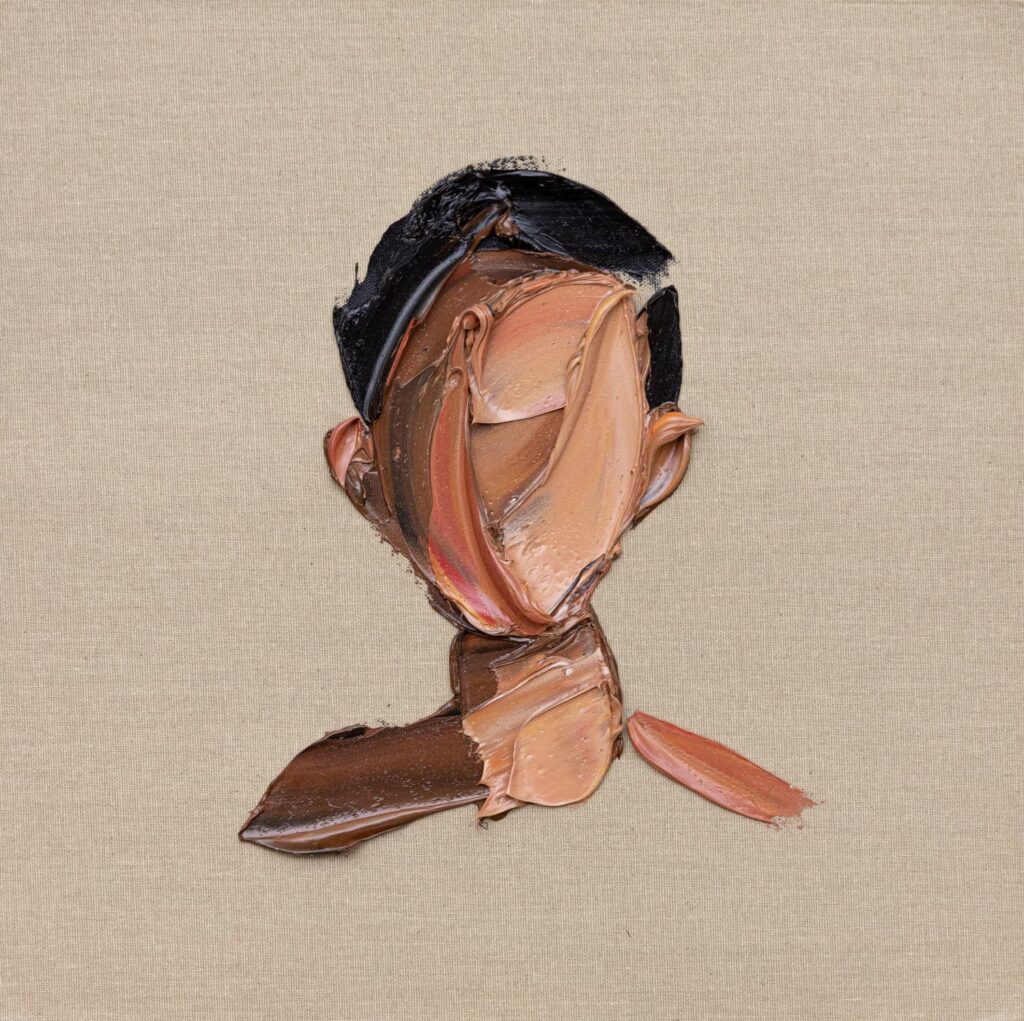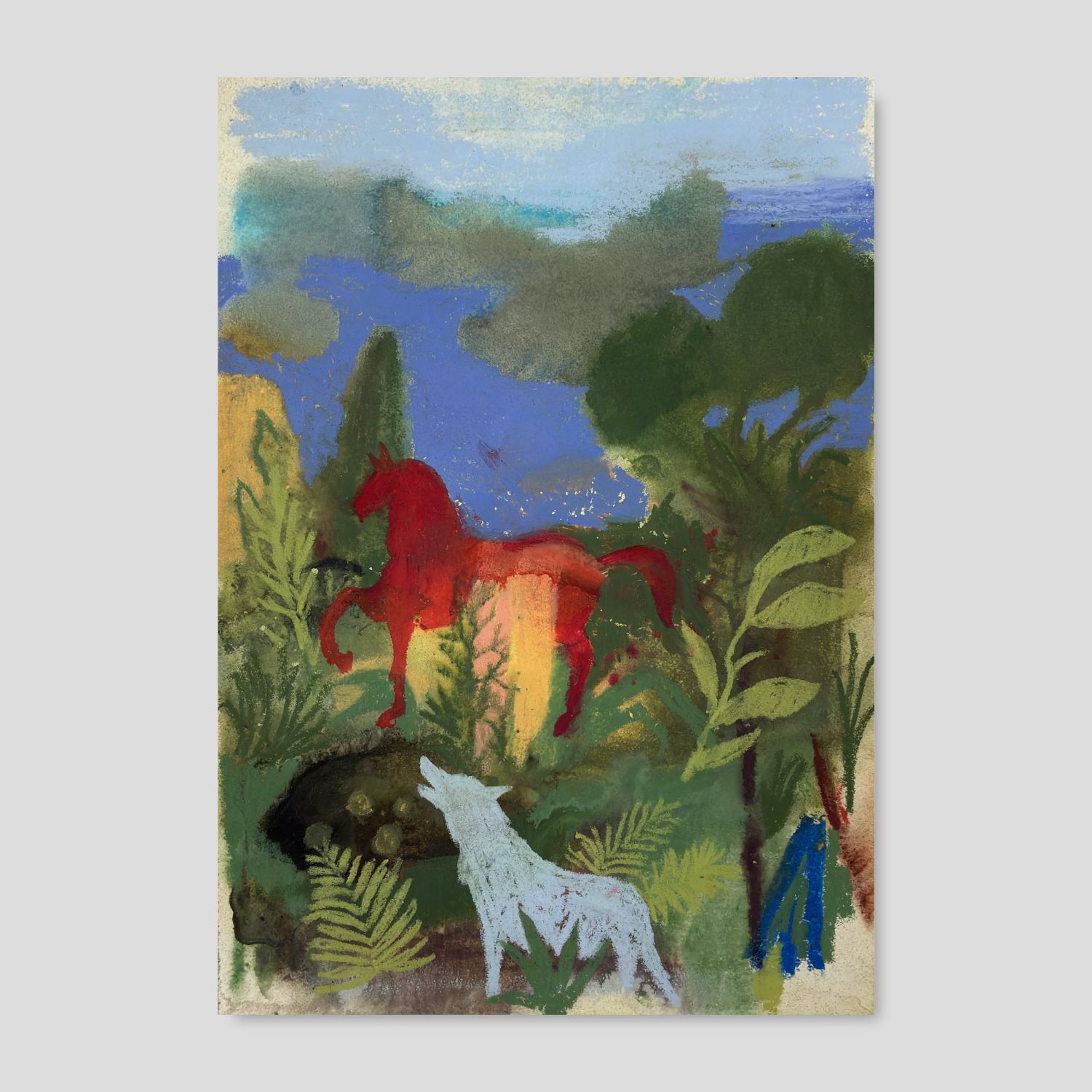Immersing ourselves in a visual dialogue between abstraction and figuration, we explore the works of Papartus, Natalia Romanciuc, Elena Gual, Wycliffe Mundopa, and Jorge Nava.
Each of these artists has sculpted a distinctive style that elevates the artistic experience to new heights, delving into the complexities of artistic duality in diverse ways.
Papartus: Abstract Lines and Revealing Forms
Papartus blends abstract lines with recognizable forms interdependently in his creative universe. While his primary focus is abstraction, he incorporates figurative elements to avoid the mechanization of the creative process. In his figurative works, the synthesis of abstract lines invites viewers to interpret personal meanings, establishing a connection between the intimate world of sensations and the artist’s vital expression.



Papartus’s “citizens” series, composed of 20 works, offers a caustic and insightful look at diversity in the perplexity and dysfunctionality of contemporary man. This intimate content seeks to establish a link between the intimate world of sensations and an allusion to deeper feelings.


Natalia Romanciuc: Female Figures as Universal Symbols
Natalia Romanciuc, with her modern figurative and symbolic expressionist style, transforms female figures into universal symbols. Each stroke, anchored in figuration, becomes a symbolic expression of femininity, motherhood, and the complexity of existence. Her art transcends the visual to become a symbolic language embracing conceptual abstraction.
Romanciuc’s works, beyond the purely visual, become reflective mirrors exploring the complex layers of the human being. From lust to insatiability, her female characters reveal a rich and profound emotional tapestry.





Elena Gual: Palette Knife that Blurs and Defines
Elena Gual, in turn, challenges beauty standards and promotes body positivity. In her textured world, the palette knife becomes a master tool to explore the duality between figuration and abstraction. Recognizable forms blur and redefine through dense impasto layers, creating works with a unique emotional depth.
Gual’s ability to play with duality manifests in “faceless” portraits that merge the figurative and the abstract. Her paintings capture fleeting moments and emotional states, inviting reflection on the complexities of life and human emotions.




Wycliffe Mundopa: Figurative Narratives with Abstract Touches
Wycliffe Mundopa, documenting life in Harare, balances figurative narratives with abstract touches. Rooted in figurative representation, his compositions incorporate abstract elements that amplify the emotiveness of his works. Each human figure becomes a node of social experiences, poetically manifesting the duality of everyday life.
Mundopa, a passionate advocate for vulnerable lives, offers a vibrant insight into the conflicts between tradition and change in Zimbabwe. At a time when there is a renewed push towards exoticism, Mundopa counterattacks with raw honesty and brutal beauty in his representations.



Jorge Nava: Abstract Expression Evoking Emotions
Finally, we delve into Jorge Nava’s abstract approach, evoking emotions with forms that subtly explore figuration. The duality in his works resides in the subjective interpretation of each viewer. Abstraction becomes a gateway to emotional exploration, maintaining the duality between form and interpretative freedom.
In his “las flores del bien” series, Nava addresses the theme experimentally, improvising intuitively. Inventing his own flowers, he symbolizes the joy of living, desire, beauty, and the ephemeral existence in a complete life cycle.



Each artist, with their distinctive style, contributes to this visual dialogue, inviting the audience to explore the richness of meanings lying between the poles of abstraction and figuration. In this fascinating encounter between the concrete and the abstract, these five artistic perspectives urge us to reflect on the complexity of artistic expression and its multiple dimensions.














